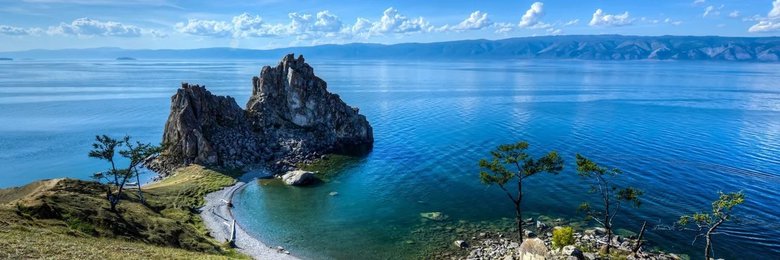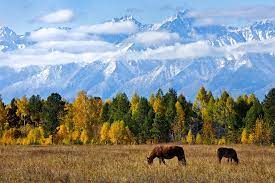Underestimating geography - the food curriculum
- rosemary
- Apr 26, 2024
- 7 min read
"Geography is the study of earth as the home of people" Yi-Fu Tuan
"Everything has to do with geography." Judy Martz

Or as Terry Pratchett so beautifully put it:
"People look down on stuff like geography and meteorology, and not only because they're standing on one and being soaked by the other. They don't look quite like real science. But geography is only physics slowed down and with a few trees stuck on it, and meteorology is full of excitingly fashionable chaos and complexity. And summer isn't a time. It's a place as well. Summer is a moving creature and likes to go south for the winter."
My grandson has chosen Geography as one of his year 11 subjects and I suspect that the rest of the family considers this a bit of a waste - a nothing subject that leads nowhere. His mother reasoned it away with peer group pressure - he chose it because his friends did. I understand the attitude because I too in my long ago youth chose Geography as one of my three A-level subjects and whenever I mention this, people lose interest - a bit like those questions I got as a young mother staying at home, when people asked me what I did. Unimportant, trivial, easy ...
Geography however encompasses just about every other subject that you get taught at school. It is a multi-faceted subject that is forever evolving. And every one of those facets has something to do with food, so whilst you might not be able to build a whole curriculum, completely focussed on food - every facet should include at least one strand on food.

So what I'm going to do here, is go through all the facets of geography that I encountered in my A-level course, with the example of a particular small - well actually not small - part of the world - Buryatia. I thought of this place because I came across this photograph, early in the year in my slightly weird Redstone desk diary. It is a photo entitled "a Buryat family wear traditional clothes during the traditional Sagaalgan (white month) celebration." I also thought of it as an example, because, like geography itself it is very much overlooked. I had certainly never heard of it, and I suspect you may not have either. Besides the people in the picture are eating - special food for a Buddhist festival:
"As it is called the “White Month”, the festive table should include predominantly white food: milk, cottage cheese, sour cream, cheese, salamat (a thick porridge or jelly made from fried flour), and boova (unleavened cakes)." New East Digital Archive
So let's journey through the different geographical strands - well the ones I knew. These days many more have been added and I will try to reference them as I go.
"Geography is a living, breathing subject, constantly adapting itself to change. It is dynamic and relevant. For me geography is a great adventure with a purpose." Michael Palin

Country/region/town studies Pick a part of the world and study its geography - the topography, population, industries, etc. an overview. The first piece of information being where is it? So what about Buryatia? Where on earth is it? Well as you can see it's part of modern day Russia and the old USSR and look how big it is - similar to Japan, encompassing the entire eastern side of Lake Baikal - the oldest, deepest lake in the world, containing 22% of the world's fresh water.
My example The Republic of Buryatia has a paragraph or two in the Encyclopedia Britannica which cover the general kind of thing involved in this topic. Mostly facts and figures - and statistics, so maths is involved, demographics - databases and more statistics, what the country does to earn money. When I was doing A-level we did Australia - a sign of my future? and the Mediterranean - that too though in a different way.

This particular strand of geography shows your place in the world and what else the world consists of - who your neighbours are. Choosing the Mediterranean over, say, Greece probably makes more sense because it's a geographical region rather than a political entity whose boundaries shift over time. When people first started making maps the boundaries of countries were natural - rivers, mountain ranges, coastlines. Now they can be a straight line that somebody drew on a map. And they change all the time - at an ever increasing rate it sometimes seems.
This kind of general country study is, if you like, the introductory overview part of geography - telling you what is where and what people do there and why. Which of course includes the food they produce, eat and export. It also includes the names of the major towns, the layout of the land, the industries, the population, the climate - most of which are the other strands of geography In the case of Buryatia the population is around 959,892 only a quarter of which are indigenous - Asian - Buryats - the rest being Russian, But try small for its size and location on the Trans-Siberian railway.
Cartography - maps - and what a world of other subjects that encompasses - history and exploration; surveying and all the technical, IT and logistical skills that making them involves; design - some maps are meant to look pretty; engineering, physics - the machines that print the maps, or digitise them, or the satellites that take the photographs today's maps depend upon ... They can be individualised to show the whereabouts of whatever you want to concentrate on - people, tourist destinations, agriculture, topography, geology, one way streets in London, crops, distribution of animals ... And of course that would include all the GPS systems and the programming behind them.
Physical geography - There are sub sectors in this particular strand, the first being topography - the highs and the lows of the land, the rivers, and lakes, the coastlines. Buryatia has it all almost - from steppes and forest to high mountains and the deepest lake in the world - Lake Baikal, which holds 22% of the world's water. I don't think there is a desert but it doesn't get a lot of rain.
Geology - the rocks and the soil - and how this part of the world was formed from the beginning of earth's history - plate tectonics and all of that, which of course extends into the realms of agriculture and mining, industries - including that of tourism. Vulcanology is another subsection here - although not in Buryatia. But yes food is absolutely connected to geology. Before you can grow crops or keep animals you need to know what kind of soil is beneath your feet, how you can transport your product and if you have the right place in which to process it.
Climatology - Such an essential science in modern times. In the past it has enabled people to know when to plant their crops, when to harvest them, what you can grow in one particular spot and so on. Now it influences politicians and industry in how they cope with our current climate crisis, and how the increasing number of climate disasters influence just about everything from insurance claims; extinction of species, loss of productive land and loss of life itself.
Meteorology Sort of climatology on a more down to earth level it tells us what the weather is going to be like tomorrow and next week - essential for farmers, and a major topic of conversation for us, as well as a factor in deciding what we do in our spare time - when we go for holidays. AND what we want to eat - it's cold and miserable today, so it's soup! There's a lot of science involved here and it is getting increasingly sophisticated. We may mock those weather forecasts, but generally they are uncannily accurate.
Town planning - I'm not quite sure what the technical word is here for this aspect of geography, but it's one that I enjoyed. Really it's all about the history of how human habitation has changed over the centuries. Why large cities are where they are and why people don't live in others. History again, and economics, engineering, architecture, commerce ... I seem to remember there were a few reasons for why the first settlements were situated where they were - on a river or a road - particularly a crossroads or a natural stopping place to change horses or rest on a long journey between two points; or a river crossing or a river mouth, at the head of a natural harbour; an oasis in a desert ... Or on a high hill so that you could see an attack coming and defend yourself more easily. Below is Ulan-de - the capital of Buryatia - an unremarkable looking place, but whose spread follows the contours of the land.

Once established, designing the town for the needs of its inhabitants became ever more complicated - residential, markets, meeting places, places of worship, places of recreation and all of them needing easy access. As the cities grew this became ever more complicated and continues to be so to the point that just about every human strand of study is involved. Food and drink are essential for the survival of cities. Just look at Gaza.

I have really only skimmed over the things that geography covers in the curriculum. I had a brief look at some curriculums and found that there are many more aspects included today although some of them - such as environmental science have become topics in themselves. The pressures on the world are not unprecedented - previous ice ages, meteor collisions and the like changed the world forever in their different ways. However, we do seem to be at a crunch point and the topics that geography covers are at the very centre of the struggle for survival - and food - how it is produced, what is produced, where it is produced which now includes science labs and giant greenhouses - is at the centre of geographical studies. Alastair Bonnett on the British site Geographical feels that:
"an ancient root of geography will be rediscovered. I’m talking about survival."
As for the people of Buryatia they currently worry about how their sons are dying in a faraway land - the Ukraine - because, of course, they are technically Russian although ethnologically Asian like the Mongolians whose country lies to their south - and therefore the young men are being drafted into Putin's war. Even faraway, unknown, little regarded corners of the world are affected by world politics. They once were part of Mongolia and like that people were nomadic and lived in those large round tents. Now, like most Russians they live in towns in ordinary Russian style homes. Politics and history overtook geography.
But now at least I do know of the existence of this overlooked corner of the world.

"geography has always been about getting out into the real world, feeling the cold rain and walking in dark and pine-scented woods. It’s the one slot in the curriculum that allows kids to breathe freely." Alastair Bonnett/Geographical
Alas I fear these days it may be a bit doom and gloom. But nevertheless it deserves to be given more kudos than it currently does. Well it's really all about feeding people isn't it?








Comments